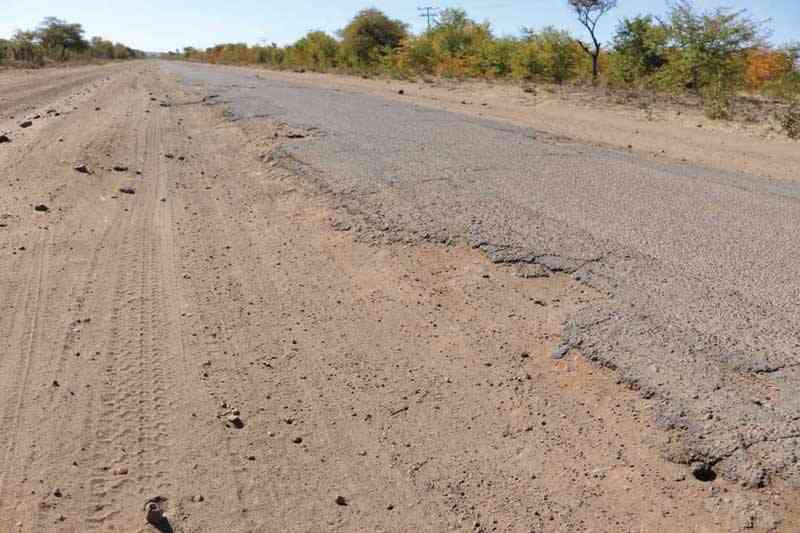
Last Thursday, I watched with horror a news clip detailing how poachers are threatening to decimate the African elephant population in Kenya — the continent’s doyen of democracy.
View Point with Wisdom Mdzungairi
I was disheartened by the fact that in the video carcasses of jumbos were strewn all over after being gunned down by poachers from a helicopter using sophisticated weapons, and I felt a big letdown. So it is not perpetrated by the poor.
Despite military efforts to stop the poachers, the problem is worsening. Clearly, no country can win this war with guns.
It is indeed time to explore more intelligent ways of motivating people to stop killing the most magnificent species.
That country is enacting new legislation, committing additional funds to hire 1 000 new rangers, and the private sector has also redoubled their efforts through increasing investment in anti-poaching with special training, more monitoring, drones, sniffer dogs, attack dogs, vehicles, thousands of dollars’ worth of remote cameras and aircraft. Still poaching remains a menace.
Kenya in the past successfully campaigned against ivory trade resulting in the ban in 1989. The ban was partially lifted in 1997 and successive once-off trade sales were conducted in Southern Africa, in particular Zimbabwe, and the funds channelled towards wildlife conservation.
What I felt last week was that Kenya has continuously failed to realise that guns will not win the war against poachers. Again, bigger fines and stronger penalties alone won’t be enough to stop poaching for ivory.
- Chamisa under fire over US$120K donation
- Mavhunga puts DeMbare into Chibuku quarterfinals
- Pension funds bet on Cabora Bassa oilfields
- Councils defy govt fire tender directive
Keep Reading
But, traditional values and conservation programmes such as the Community Areas Management Program for Indigenous Resources (Campfire) could help.
Despite what Kenya believes are best efforts to protect the jumbo, the country is not winning the war on poaching. Between January and June this year 7,5 tonnes of ivory was seized in Kenya — more than was seized in all of 2012.
By all measures, elephants are much worse off than 2012; ivory continues to flow through the country at increasing rates, and the slaughter of elephants is accelerating. The situation is rapidly spiralling out of control.
According to conservationists, Kenya’s elephants could be wiped out by poaching in 10 years, unless urgent measures are taken to end the crisis. A demand for ivory and rhino horns in the lucrative Asian black market has attracted cartels to Africa that are presently carrying out cold blood killings of the animals.
In Kenya’s Masaai Mara, Tsavo and other major game parks, the situation is at its worst now.
An internationally famed paleontologist Richard Leakey said: “There has never been such a level of killing as we are experiencing today. Unless we do something now, elephants will be gone from the wild within the next decade. I believe partnerships with private sectors are critical. We cannot afford any further delay and we have to be tough.”
In 1979, when 1,2 million elephants roamed Africa, Kenya had 167 000, according to the Kenya Wildlife Service (KWS). Today, Africa has an estimated 300 000 pachyderms, representing about a 75% loss since 1979, according to figures compiled by WildlifeDirect. Kenya could have between 30 000 and 38 000 elephants, although no physical count has been done.
Yet, Zimbabwe, Botswana, South Africa, Zambia and Namibia have the highest population.
Disappointing is the fact that top officials and so called “investors” both Asians and from the West are liable in part and Kenya has taken many decisive actions.
Still, Zimbabwe has the potential to disintegrate into Kenyan levels. Preparing for the lifting of the ivory trade moratorium in 2016 is important now than ever before. In the last few months, figures have shown increasing trends in poaching around the country in particular, Save Valley Conservancy, Zambezi Valley, Midlands Conservancy and many other park estates.
Our communities long considered the buffer against poachers from outside are now poaching. What is going on here?
The Campfire programme long considered the bedrock of Zimbabwe’s wildlife conservation seems to have disappeared, yet this should be allowed to take root once more. This is to rein local poaching rings operating with impunity around the country commercially or for the pot.
Campfire and Parks and Wildlife Management Authority must take the lead to understand the psychology of poaching taking cognizance of ex-KWS official Paula Kahumbu’s recent discussion with behavioral economist and professor at Duke University Dan Ariely, challenging Africa to think about the human motivations behind the plundering.
Ariely’s logic suggests that the more Africa report the scale of ivory trafficking and elephant poaching, the more it seems ubiquitous and therefore people will think “everyone else is doing it so why not me?”.
This appears counter intuitive, but what this means is that the more awareness is created about poaching and ivory trafficking, the worse it’s going to get. At least as long as the awareness is not tightly connected with moral disgust and condemnation.
Make game poaching a socially unacceptable practice, morally wrong, and a taboo whatever the magnitude, and look for a way to give those who have just entered onto the thin edge of the slippery slope, a reason to jump off it.











